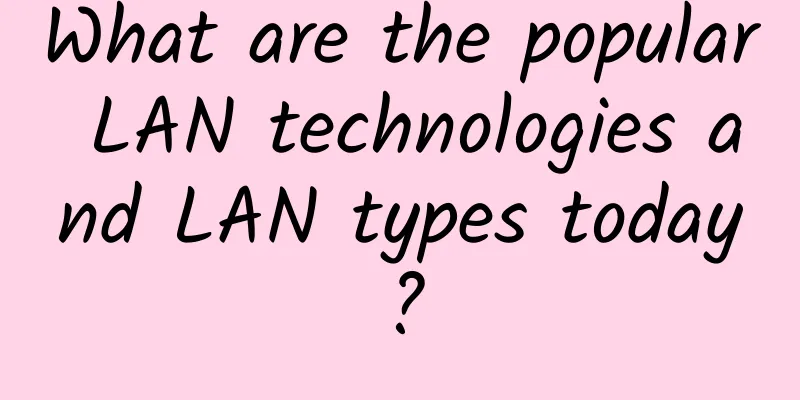Enterprise Switches and Selection Guide

|
An enterprise switch is a type of network switch that is deployed in large networks containing many connections. These switches do not suggest typical types but only refer to the working environment and applications. There are different types of enterprise switches based on the design. This article analyzes these switches, their hierarchy, types, and applications in detail. Enterprise switch typesEnterprise switches: Discussing layered designAll enterprise switches have the same layered design. In a LAN, switches are divided into three layers: Core switches: They form the backbone of any network. They are the gateway to the internet as they are located at the center of the network. In any network there can be at least one or two core layer switches. This switch must be fast, fault tolerant, and highly available. Therefore, only fully managed switches are used as core switches. Distribution switches: They act as a bridge between the core and access layer switches. As the name suggests, these switches ensure that packets are routed correctly in the network. It is also responsible for policy-based network connectivity and performs functions such as packet filtering, QoS, application gateways, etc. A network can include distribution layer switches that are equivalent to the sum of core layer switches and access layer switches. These switches are also called aggregation switches or workgroup layer switches. Access Switches: These switches help to connect the end node devices like wired devices or APs to the network. They are the most important layer switches. Most of the switches seen in the network are access layer switches. Access switches are equipped with supported features like VLAN, port security, Fast Ethernet/Gigabit Ethernet, etc. Enterprise switch types based on design and applicationToday, businesses are implementing hybrid networks to take advantage of the benefits of both copper and fiber connections. As a result, we are seeing an increased use of fiber network switches in many enterprise networks. These switches offer better connectivity than traditional copper switches. If you have been considering any type of enterprise fiber network switch for your business, it would be very helpful to consider the following types. Managed switches: As the name suggests, these switches are managed by administrators. They help build highly secure networks. Administrators can easily adjust these switches to optimize data rates when new users or devices are added to the network. Managed network switches are also considered the best choice for supporting Gigabit Ethernet. Today, many network administrators use managed switches to build virtual local area networks (VLANs), enabling them to segment their networks and manage traffic efficiently. These switches are usually more expensive than unmanaged switches due to the wide range of features they offer. For example, managed switches are equipped with Spanning Tree Protocol (STP) which enables administrators to easily perform their QoS duties. They can control the switches remotely to ensure maximum security. Despite the high cost factor, these switches allow administrators to build a customized and efficient network with better traffic flow. Unmanaged Switches: Unmanaged switches have no managed features. These switches can be operated by anyone with or without any technical knowledge. These switches require no special installation and are usually plug-and-play. Unmanaged switches have an auto-negotiation feature that enables the ports on the switch, server, or router to communicate with other devices on the link. This feature also enables the switch to identify the connection speed and duplex configuration. These enterprise switches are preferred for applications that require minimal or no customization. If the administrator's goal is to connect and customize it remotely, extensive setup is required. Otherwise, they cannot monitor and manage it remotely. POE Switch: PoE stands for Power over Ethernet fiber optic network switches that distribute power to different devices on the network. These switches produce a PoE network that supports both PoE and Ethernet devices. PoE switches are credited with introducing simplicity in networking as they reduce the need for wiring. Any device on a PoE network can operate easily, even if they are not near an AC access point or router. The switch sends power and data to the connected devices. These switches can transmit up to 100 meters over Ethernet. There are two types of PoE switches: active and passive PoE switches. Active PoE switches: These switches are rated for IEEE 802.3af, IEEE 802.3at, or IEEE 802.3bt standards. They can negotiate the appropriate voltage between the PD and the PSE device. Passive PoE switches: These are non-standard PoE switches that deliver power over the Ethernet line without communication or negotiation. Smart switch: This is a managed switch that has little functionality with limited management options like duplex mode or VLANs. These switches are a good choice if the network requires limited customization. Due to the limited customization options, these devices are moderately priced. How to Choose the Best Enterprise Switch for Your ApplicationThere are several things to keep in mind when choosing an enterprise switch for your application. Optical network switches vary in design and application, so care needs to be taken when choosing one. The following pointers will simplify the selection. Power: Do you want to power your devices? If that sounds like a yes, then a PoE network switch is the best option. These switches can also help you reduce the complexity of cabling and infrastructure. Ports: Managed, unmanaged, PoE, and smart switches come with a number of ports. We can find these switches in different port sizes like 5, 8, 10, 16, 24, 28, 48, and 52. If your business is expanding rapidly, then you might need a switch with the maximum number of ports. However, if you have limited expansion plans, then it is advisable to choose a switch with a limited number of ports. Stackability: If the business is expanding rapidly, it will need to support more devices, which means investing in more switches. In such cases, stackable switches come in handy. These switches can connect and help improve the availability and network capacity of the network. Similarly, if the network expansion is limited, you can try standalone switches. These switches work as a single entity and have limited capacity. Speed: Whichever type of switch you choose, make sure to check the speed. These switches are available as Fast Ethernet, Gigabit Ethernet, and Ten-Mbit speeds. Customization level: Do you have one of the busiest traffic networks that requires a high level of management and customization? If this sounds positive, then a managed switch is the best choice. If only limited customization is required, then a smart switch is a good choice. If the application does not require customization, then an unmanaged switch would be better. in conclusionChoosing the right network switch will depend on the application requirements. All networks today use the above types of switches, either alone or in combination. If you are also considering a hybrid network using these switches and fiber equipment, make sure you make an informed choice. Enterprise switches also vary in configuration, and not all switches will be suitable for your application. In this case, you can check online catalogs to get more information about these switches or you can contact the manufacturer to make the right choice. After all, the enterprise network will be a major growth driver for the business. |
<<: Synchronous vs. Asynchronous Data Transfer: Which is Better?
>>: Business Benefits of Fiber Optic Network Connectivity
Recommend
What is Industrial Ethernet? What are its advantages?
Industrial Ethernet is an industrial network deve...
Illustrated Network: Uncovering the principle behind TCP's four waves, combined with the example of a boyfriend and girlfriend breaking up
In this section, Rui Ge will continue to show you...
Three considerations to spark innovation on the modern web
Today’s networks may not adapt well to changing n...
iPhone 12 is coming! What else is there to look forward to besides the new phone?
[[344926]] Apple said on Tuesday that it will hol...
Operators and the Internet are facing a turning point: the number of mobile phone users in the country has decreased by 20,000 in one day
Although Internet company stocks have skyrocketed...
You clearly have a 4G phone, but the operator still wants you to sign up for a 5G package?
According to data from the China Academy of Infor...
Chinese companies account for more than 30% of global 5G standard patent declarations
CCTV News: The reporter learned from the Ministry...
How far are we from the legendary 5G?
If the upper left corner of your phone desktop sh...
Understand TCP Packet Unpacking in One Minute
Usually, you may encounter such a phenomenon duri...
The battle of 1G to 5G, the communication reshuffle is about to begin
Recently, there has been a big conflict between H...
What does a communications engineer do?
As a communications engineer, I have been asked t...
Highlights of Bluetooth Mesh Technology
Bluetooth is one of the most dominant low-power w...
Huawei's Li Peng: Accelerate the prosperity of 5G and its evolution to 5.5G, and accelerate the move towards an intelligent world
From February 27 to March 2, MWC 2023 (2023 Mobil...
The Secret History of IPv6
As we all know, IPv6 is a new technology that is ...
Run, AI! Huawei Cloud China Tour tells you the story of AI and applications going hand in hand
[51CTO.com original article] In fairy tales, when...


![[Black Friday] RAKsmart: VPS flash sale from $0.99/month, cloud server flash sale from $1.99/month, dedicated server flash sale from $30/month](/upload/images/67cabced032b3.webp)

![[Black Friday] Hostodo: $13.99/year-512MB/16G NVMe/3TB/Las Vegas & Spokane & Miami Data Center](/upload/images/67cac0126520b.webp)




